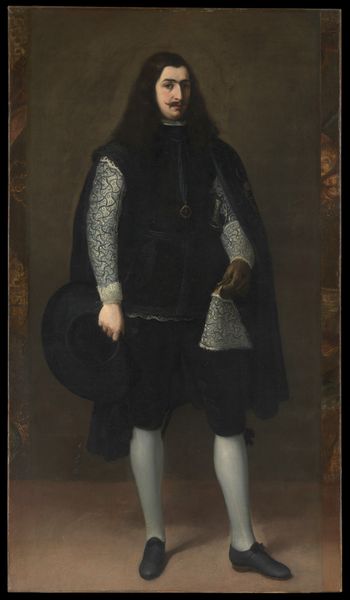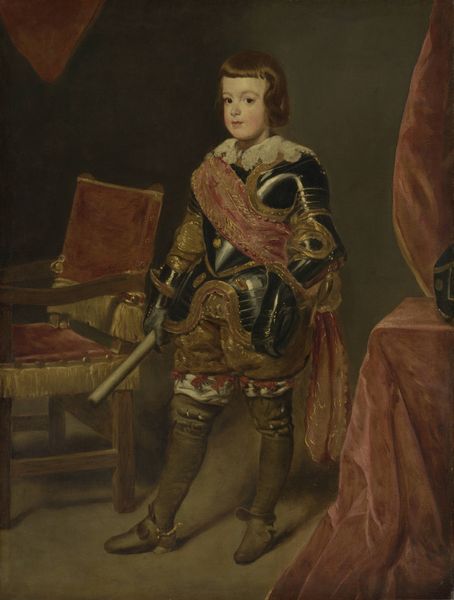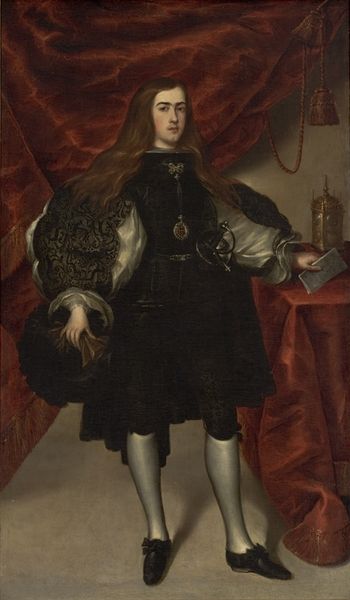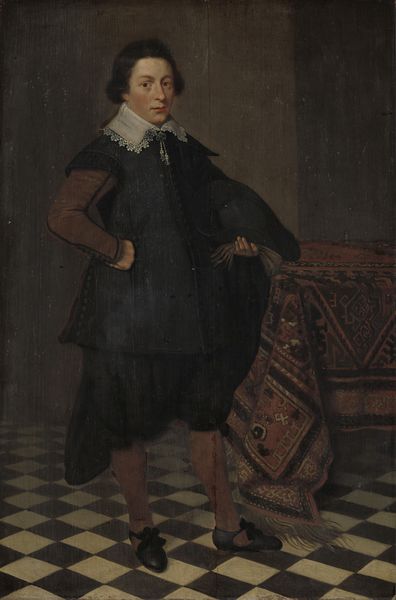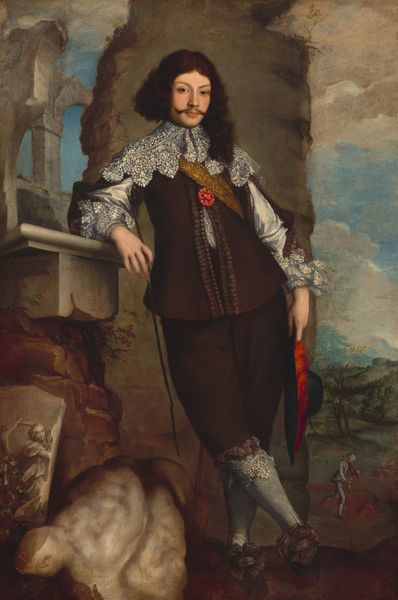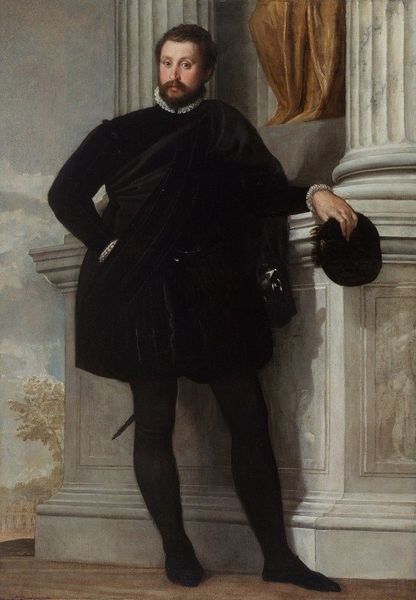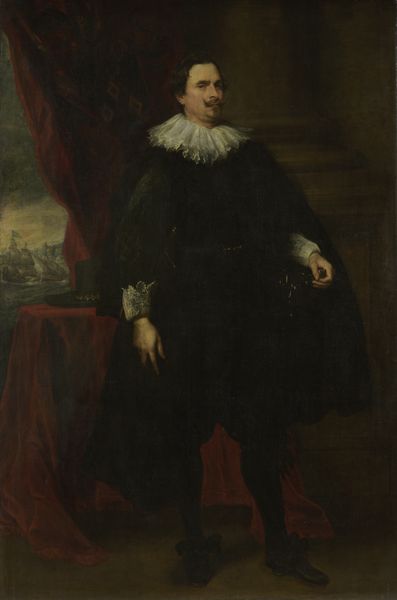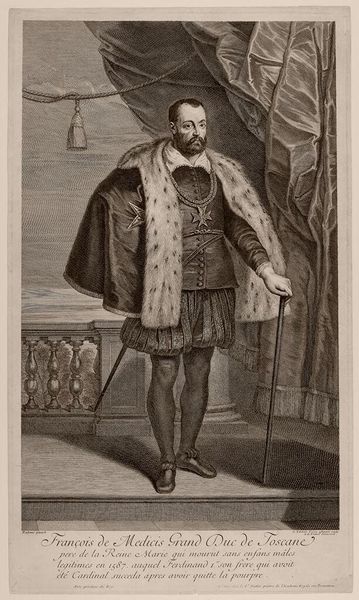
painting, oil-paint, wood
#
portrait
#
baroque
#
painting
#
oil-paint
#
figuration
#
oil painting
#
wood
#
history-painting
#
portrait art
Dimensions: 32.5 cm (height) x 24.7 cm (width) (Netto)
Editor: Here we have Peter Paul Rubens's oil on wood portrait of "Francesco I de' Medici (1541-1587)", created sometime between 1620 and 1624. It has a very stately and formal presence. How do you approach a piece like this? Curator: I immediately consider the material conditions surrounding its production. The sumptuous fur trim and elaborate gold chain weren't just decorative; they represented very real economic power and access to resources. How does Rubens utilize the materiality of paint to communicate status? Editor: It does seem very carefully rendered, from the sheen on his cloak to the texture of the fur. But it feels…idealized, almost. Curator: Exactly! Think about where Rubens was situated in that social structure and the commission he received. Rubens wasn’t just depicting a man, he was constructing and legitimizing Medici power through the very act of painting. Consider also that the wood support itself, what species was it? How did that availability impact the physical creation, transportation, and consumption of the piece? Editor: So you are saying that Rubens, his patron and their places in society, and even the trade routes impacted this image? It is amazing to think how many artisans, merchants, and laborers were involved in just this one image. Curator: Precisely. Even the pigments have a story to tell about global trade and extraction! What happens when we unpack art’s role in the system, rather than just seeing it as an isolated beautiful object? It brings into view a network of social relations embedded in the work itself. Editor: I’d never really thought about art that way. I am grateful to have an expanded view, considering everything from raw material to artist to owner to where it wound up. Curator: Absolutely! Approaching art with a Materialist lens really can highlight all the underlying power structures present at the artwork's origin.
Comments
No comments
Be the first to comment and join the conversation on the ultimate creative platform.
